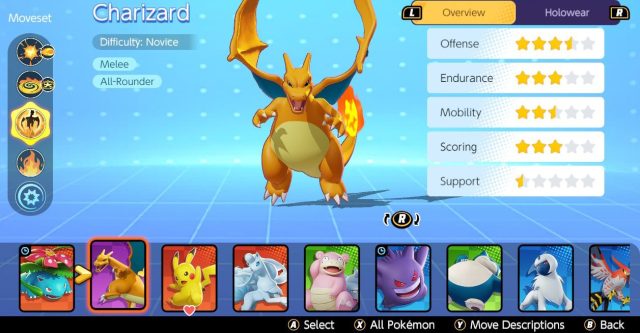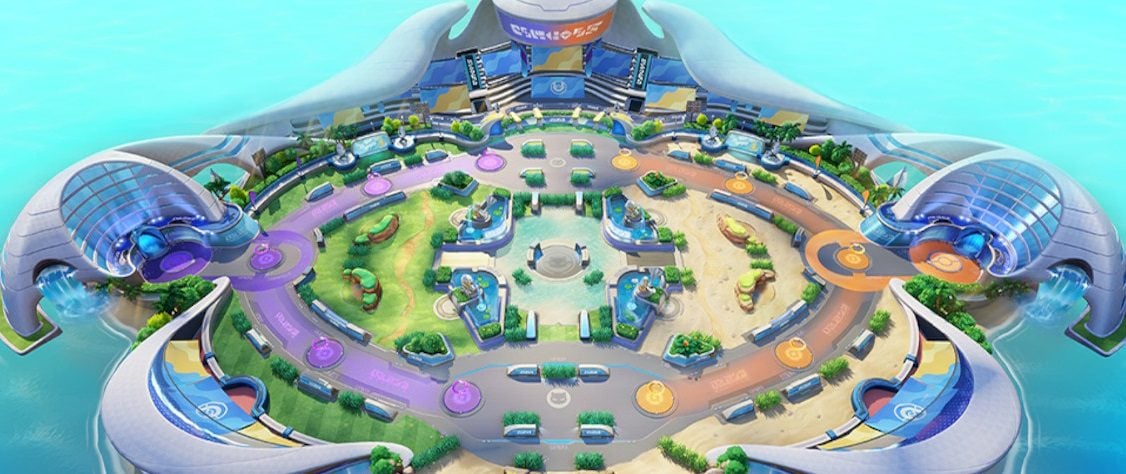Unite for Unite improvements
The last time I wrote about Pokemon Unite, I was merely a student. Now, I’m on my way to becoming a master. Modest, I know! 20 MVPs, some ranking up, 3/4s of the roster in hand, and three level 20 held items later, I feel like I have a good grasp of the fundamentals.
Perhaps most importantly, I’ve tested every in and out of the currency system that ranges from fair to predatory. Let’s dig into this great foundation for a casual MOBA that’s saddled with a flawed business model that will hopefully right itself.

Pokemon Unite (Android, iOS, Nintendo Switch [reviewed])
Developer: TiMi Studio Group
Publisher: Nintendo / The Pokemon Company
Released: July 21, 2021 (Switch) / TBA (mobile)
MSRP: Free-to-play (with microtransactions)
Before I get into the nitty-gritty, I just have to say Pokemon Unite is a lot of fun whenever you’re actually in a match. I felt this way at launch and I still feel it nearly 100 games in. As I’ve settled into a few of my more comfortable picks (Pikachu, Snorlax, Absol, Edegoss), it’s become more and more apparent just how exciting these swift knockout brawls are.
One secret ingredient? At just 10-minute rounds at a maximum (quick battles are five), a “bad game” doesn’t ruin your entire day. Heroes of the Storm did a fantastic job of making MOBAs more accessible, but Unite goes even a step further. Getting back on the horse and queuing again is so easy, as is the prospect of conning friends into playing a fast-paced Pokemon game so you have people to run with.
As a recap, Unite is sort of a mix between lane MOBA brawling action and soccer/basketball. Players acquire Aeos energy throughout a match from neutral mobs (wild creatures) and from players (kills make them drop a portion of their earnings). Any amount of Aeos can be “dunked” into an enemy goal, and it’s your job to play a bit of give and take to secure kills for safe dunks while protecting your own goals. Deaths often mean your goal is now wide open for a pack of two or more characters to swarm your territory and bully a goal: so like any MOBA, staying alive is paramount.
The MOBA core mostly comes in via leveling, skill/build options, and the “lane” framework of the core map (ranked and standard matches are currently subject to a single two-lane arena). But there’s also a few other nuances like returning to base to get a breather, pushing “bosses” (big mobs) for buffs and potential big bonus points (at the top, bottom, and middle), or grabbing healing berries and using “fast lanes,” which are benefits for keeping goals alive in your territory.
That’s the essence of Unite, and from there you can really deep dive into its fundamentals with roster choices (as well as the roles of attacker, defender, supporter, speedster, and all-rounder) and item builds. It’s incredible, but I’ve liked nearly every character I’ve played at this point (which is everyone but Greninja). The studio nailed the fantasy of each Pokemon, and the high damage output of nearly everyone on the roster might make for some balance snafus, but it ensures that just about everyone is fun to play and feels impactful.
There’s a surprisingly deep settings menu that lets you toggle all sorts of things, including manual aim for skillshots and better camera control. While it might seem fully casual on the surface, Pokemon Unite can really sneak up on you. With separate experience pools and a fairly high skill ceiling with skillshot aiming on certain characters, players have a degree of agency to carry, and I’ve seen games completely swing in another direction because of the efforts of one person. A surrender option [buried in multiple menus], even in a 10-minute MOBA, can also cut down on extreme frustration if you’re getting dominated and can’t leave your base.
If you want to take a break from the same 5v5 map you can go for quick battle, which pulls a Splatoon and rotates a new 3v3 or 4v4 map in daily. These maps generally aren’t very balanced-focused but the best part is that they’re five-minute matches and have new wild Pokemon to take on with unique arena layouts and gimmicks. They’re an awesome diversion, and a great way to spend a work break, as they often sport their own set of unlocks and rewards.
So everything sounds well and good, right? Well it’s time to talk about progression and monetization, which is typically a downer in a Tencent joint and is no exception here. At the moment, meaningful unlock progress is slow and will severely cap out at around 14 days in. Players get to choose a starter (cheaply costed) Pokemon, then are granted access to Slowbro and Venusaur early by leveling up. From there you can get Ninetails as a two-day daily login bonus, followed by Scorbunny (eight days) and Greninja (14 days). Crustle is another freebie after finishing up a “seven-day challenge” block (which is in a separate menu from everything else). Duplicate rewards refund the base amount of currency you spent on them and many of the cosmetic are utterly skippable, which is fair. But let’s get into the foul.

By the time you exhaust all of your freebies you should have enough coins (free currency) to spend on one or two other Pokemon (depending on price) — or invest them into picking up all of the held items (you get three slots in which to customize which upgradable items you hold) in the game. Alternatively, you can navigate the trainer cosmetic system, character skins (of which there are a staggeringly low amount at launch), experience/coin boosts, and gacha cosmetic rewards. Oh and there’s a season pass with a free and premium track, and a third currency (tickets) that can be used for several purchases. Outside of challenge reward exceptions, coin gains are gated to roughly 2,000 per week, and season pass progress is predominately time-gated.
It’s…a lot, and most of these are found in separate menus to add to the confusion. While the in-game HUD is fantastic, the UI is very poorly done, forcing multiple clicks to get to menus that are all over the place. It’s exacerbated by a lack of a “claim all rewards” option for select menus, but the actual reward system itself has a dark side.
To address the unlock situation first, even nearly a week in, I’m experiencing a high degree of mirror matches. Blastoise and Gardevoir are waiting in the wings, datamined and nearly ready for action. Straight-up, they should have been in at launch to give the roster a little more diversity, especially the former in the tank role. The roster issue is especially egregious in ranked play, as there are a few clear-cut very good options at higher ranks for certain roles, and people generally gravitate toward those same few picks. Beyond the progression issues, the held item system has an insidious problem lurking underneath.
So there’s a hidden way to let you exchange gems (premium currency) for tickets, which in turn can purchase item enhancers, which plus-up items that directly influence power levels and gameplay. While there’s normally no default option to actually do this directly, when you’re out of tickets (sneaky), the game will ask you “if you’d like to exchange gems for tickets.” The gap between a level one and level 20 item can be noticeable, especially power-ups like the float stone: which goes from 10% non-combat movement speed to 20% at level 20. That’s the difference between chasing down a foe or escaping them, or getting to a goal pad to get a last-second score.

It might seem like an oversight, but a three-step currency that’s directly tied to gameplay efficacy is par for the course for Tencent. While you may never notice it in casual play, the implications at higher ranked levels is obvious. It’s also a very tough river to navigate as a free player, as you can only feasibly level-up a few held items for one particular character/build at a time. If you want to actually boost a variety of items, it could take months.
I can’t stop playing Pokemon Unite and chain-queuing games because it’s so fun, but these issues are going to drive some people away and need to be addressed. It’s a shame a few of these problems exist with the monetization skeleton because they’re so easily fixable, and while targeting whales is a classic mobile strategy, I don’t think the general audience for Pokemon is going to stand for it long term. A recent survey call gives us a glimmer of hope that the powers that be will improve balance, lingering bugs, presentation, and potentially, the economy (I’m less hopeful about this last one with Tencent at the helm).
In the meantime, your Pokemon Unite mileage may vary.
[This review is based on a retail build of the free-to-play game downloaded by the reviewer.]





Published: Jul 31, 2021 03:00 pm